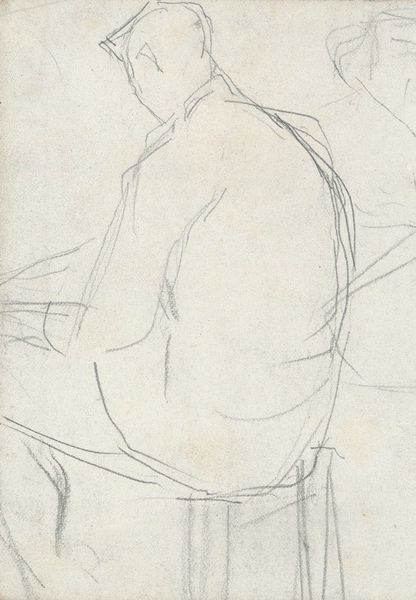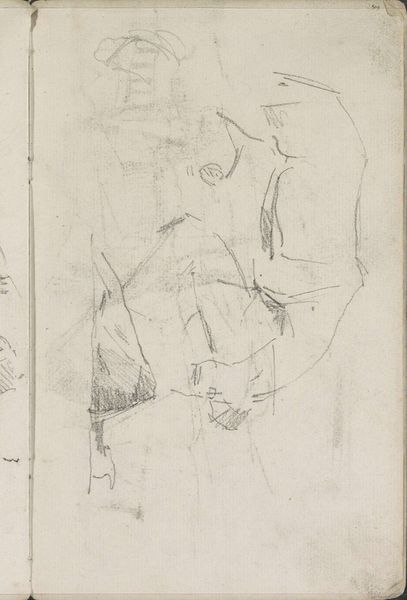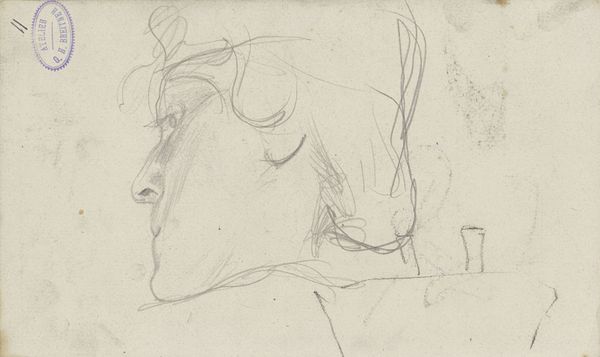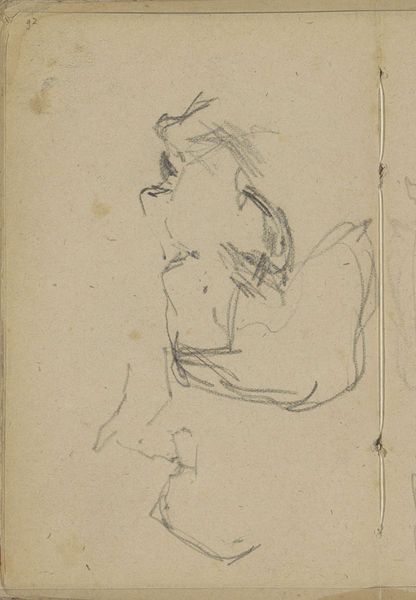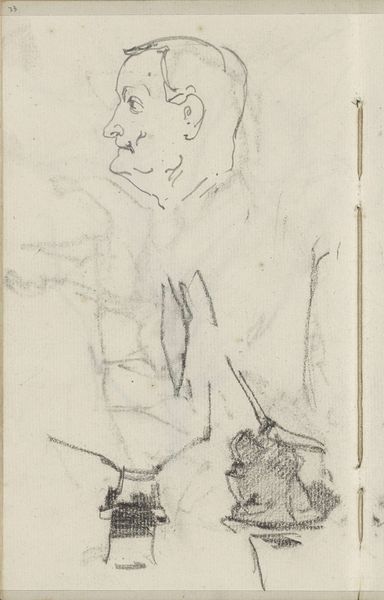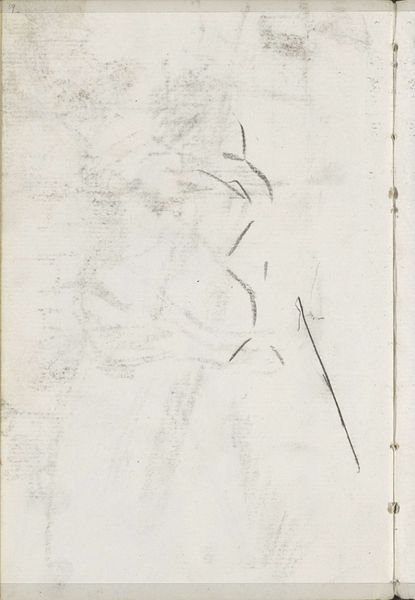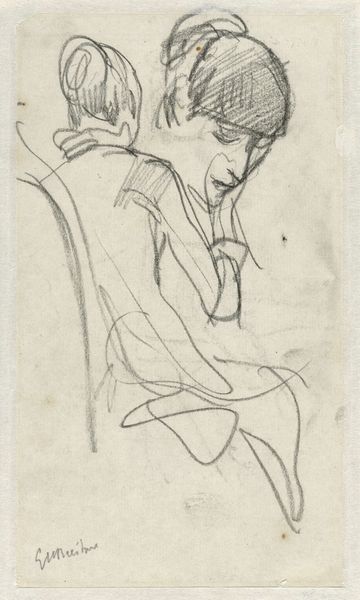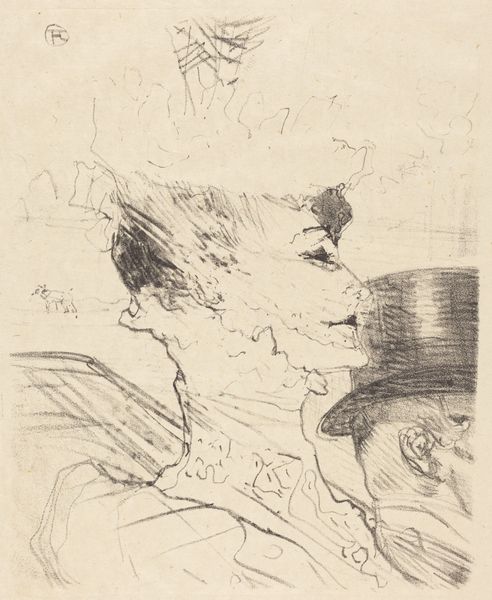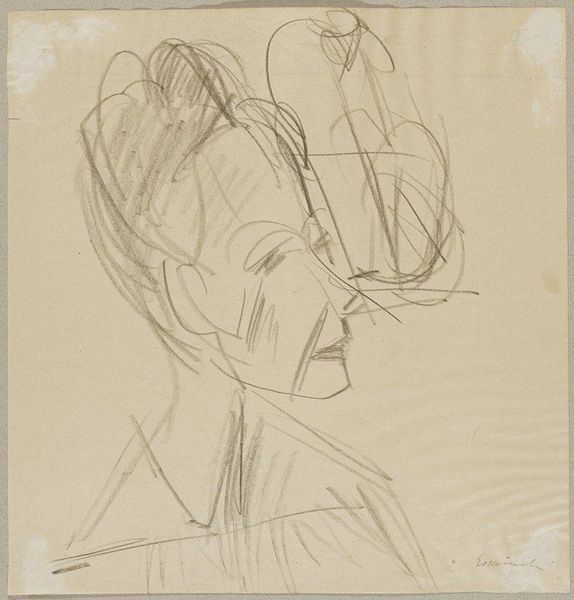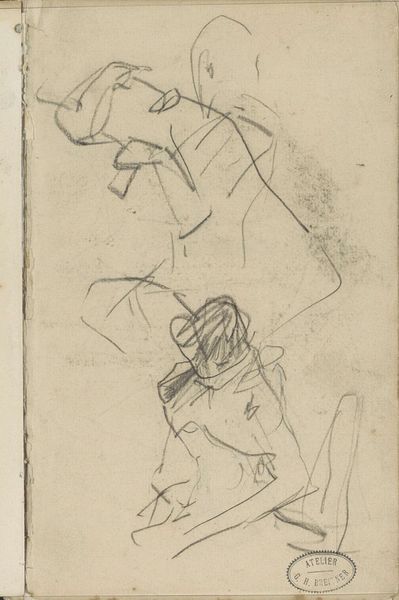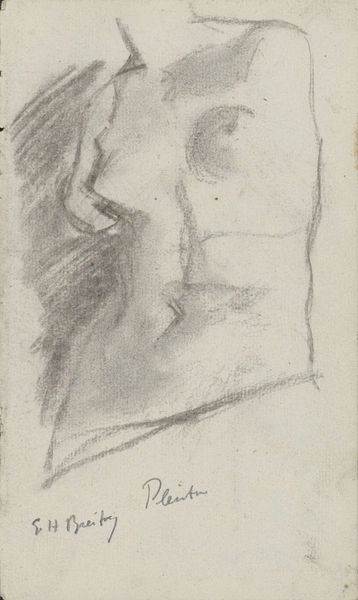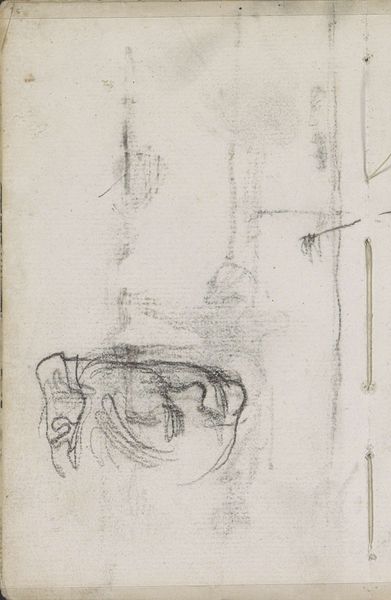
drawing, pencil
#
portrait
#
drawing
#
impressionism
#
pencil sketch
#
figuration
#
pencil
#
line
#
realism
Dimensions: height 192 mm, width 117 mm
Copyright: Rijks Museum: Open Domain
Curator: Breitner’s "Woman with Raised Arms," created in 1882, intrigues with its delicate yet suggestive pencil lines. It's part of the Rijksmuseum's collection. What’s your first impression? Editor: The energy of this drawing is immediate. Raw. The urgency is apparent from the sketchiness and lack of detail – an intimate, almost secretive moment. Curator: Right, it's that captured moment. For me, it's like glimpsing someone lost in their thoughts or reacting to something just out of our view. Breitner was incredibly attuned to capturing everyday moments, turning what’s fleeting into something permanent, don’t you think? The materiality of a quickly sharpened pencil dragging along paper is a study of the artist’s process, which echoes the process of living. Editor: Agreed. And look at the use of just pencil; the limitations actually highlight the skill. No colours or heavy lines to distract, all reliant on shade and the direction of the marks made on the paper. The social context is really brought to light – a Dutch life expressed not through wealth or lavish imagery but the subtle hand gestures and movements captured during a daily chore or activity. Curator: The way the shading is done around the face – it almost obscures the woman's features, creating a kind of anonymity. Maybe this drawing is less about her individual identity, and more about universal feelings. What about the paper itself? Was it expensive paper, or simple newsprint for disposable studies? It certainly has age-marks! Editor: Ah, great question! Paper quality speaks volumes. Cheaper stock could imply preparatory work; pricier paper, a finished piece. But whatever its initial intent, its preservation elevates it, re-framing its cultural status. Pencil, too, evolved massively then with industrialization! Curator: Right, exactly. Its accessibility allowed the working classes to access art – what was once for the few suddenly democratized in its practice. You know, looking at this again, there is something incredibly compelling about its simplicity. It’s like a haiku: so much suggested in so few lines. It allows for interpretation; space for the imagination. Editor: Precisely! By focusing on these modest materials, Breitner directs our attention to the artistry inherent in ordinary experience. We learn to value skill divorced from wealth – instead the mastery in a moment captured. Curator: That’s wonderful. A dance of simple strokes; everyday life rendered monumental by close examination. Editor: Indeed. I'm newly appreciative of both the artwork and how it functions to make social class invisible.
Comments
No comments
Be the first to comment and join the conversation on the ultimate creative platform.
